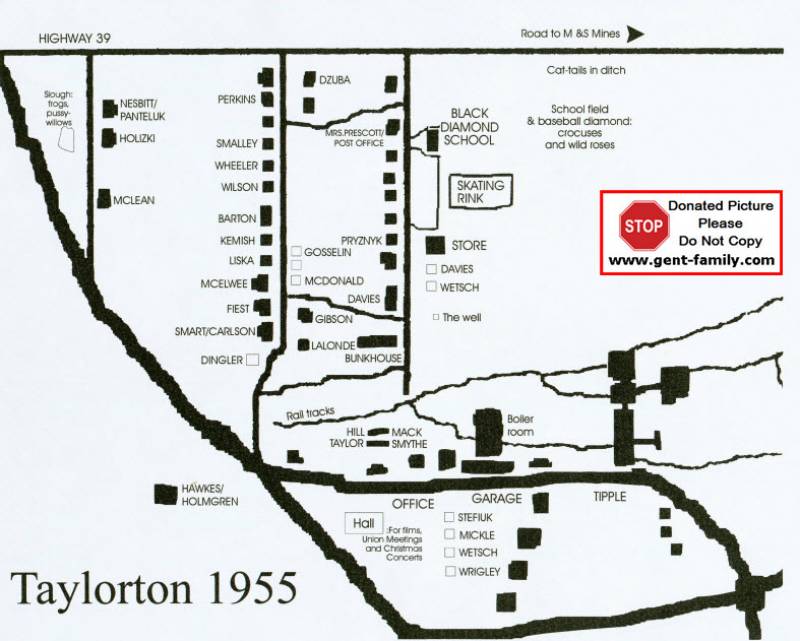Table of Contents

Taylorton 1955 History Book
Taylorton, Saskatchewan, Canada
Note- I now have the “1955 Taylorton History Book”, courtesy of my late Aunt Dolly Backman, nee Gesell,
husband of Roy Backman, shown as a Mechanic in 1945 in Taylorton
Sections scanned and added below
History of Taylorton
Taylorton is Born!
As the Souris Valley Mine increased its output from a few tons per day in the 1890s to almost 100 tons per day in 1900, more workers had to be employed. Some of them were men from mining areas in the Old World; Upper Silesia in Central Europe and many came from coalfields in Britain - especially Lancashire, Yorkshire and Durham. Control of the company's operations passed from pioneer-owner Hassard to John Taylor. A fair-sized settlement housing mineworkers had now grown up around the workings. This was named Taylorton and became the new address. The “Coalfields” Post Office was moved and re-named. Estevan was a long was away in those days before there were any cars; the little community had to make its own entertainment.
Taylorton moves up to the Prairie
By 1905, the coal in the valley was almost worked out so the operations were moved on to the Prairie a half-mile to the North. Mining equipment, houses and Church were hauled up the steep hill. The coal seam was reached by a slope which led to the lower seam - a vertical distance of 60 feet. Mine cars containing 2 tons were hauled up the slope by steam gear. The CPR lead a spur from Bienfait to the site and no more coal was taken along the valley to the Soo Line; the valley working was closed.
Taylorton in the Depression
In the thirties came the depression in which Taylorton shared. Farmers, who could not afford to pay freight charges began again (as had been done in the 19th century) to haul their fuel by wagon across the Prairie. Wages at the mine were low and there was much unemployment; many families left Taylorton and, in 1932, the mine closed down for 7 weeks, re-opening later under new ownership. At this time a U.S. company Truax-Traer was beginning a completely new type of mining on the Coalfield, SE of Estevan; strip-mining. The next few years saw great improvements in underground mining methods as modern coal-cutting machines, conveyor belts and shearing machinery increased output. Horses were still used in the rooms and entries, but electric locomotives hauled on the main roads. In 1935 there was a serious fire at the Tipple, and later, a 59-day strike over wages.
The change to Strip-Mining
It is said that the men of Taylorton, employees of Western Dominion Mines Ltd., produced more coal per man-day than any other workers on the face of the earth. Taylorton, whose past, present, and future is so completely bound to these mining operations, is proud of the machines which have made this possible. To us they are an everyday sight, but to those who read this book they show the immense strides which have lead Taylorton from a pick-and-shovel production of 3 tons per man-day in 1904 to the present level of 31 tons per man-day.





























































